
Cortona is a town and comune in the province of Arezzo, in Tuscany, Italy. It is the main cultural and artistic centre of the Val di Chiana after Arezzo.

Egyptian Revival is an architectural style that uses the motifs and imagery of ancient Egypt. It is attributed generally to the public awareness of ancient Egyptian monuments generated by Napoleon's conquest of Egypt and Admiral Nelson's defeat of the French Navy at the Battle of the Nile in 1798. Napoleon took a scientific expedition with him to Egypt. Publication of the expedition's work, the Description de l'Égypte, began in 1809 and was published as a series through 1826. The size and monumentality of the façades discovered during his adventure cemented the hold of Egyptian aesthetics on the Parisian elite. However, works of art and architecture in the Egyptian style had been made or built occasionally on the European continent since the time of the Renaissance.

Mary Somerville was a Scottish scientist, writer, and polymath. She studied mathematics and astronomy, and in 1835 she and Caroline Herschel were elected as the first female Honorary Members of the Royal Astronomical Society.

The Non-Catholic Cemetery, also referred to as the Protestant Cemetery or the English Cemetery, is a private cemetery in the rione of Testaccio in Rome. It is near Porta San Paolo and adjacent to the Pyramid of Cestius, a small-scale Egyptian-style pyramid built between 18 and 12 BCE as a tomb and later incorporated into the section of the Aurelian Walls that borders the cemetery. It has Mediterranean cypress, pomegranate and other trees, and a grassy meadow. It is the final resting place of non-Catholics including but not exclusive to Protestants or British people. The earliest known burial is that of a Dr Arthur, a Protestant medical doctor hailing from Edinburgh, in 1716. The English poets John Keats and Percy Bysshe Shelley, as well as Russian painter Karl Briullov and Italian Marxist Antonio Gramsci are buried there.

The Expedition of the Thousand was an event of the unification of Italy that took place in 1860. A corps of volunteers led by Giuseppe Garibaldi sailed from Quarto dei Mille near Genoa and landed in Marsala, Sicily, in order to conquer the Kingdom of the Two Sicilies, ruled by the Spanish House of Bourbon-Two Sicilies. The name of the expedition derives from the initial number of participants, which was around 1,000 people.

The English Cemetery in Florence, Italy is an Evangelical cemetery located at Piazzale Donatello. Although its origins date to its foundation in 1827 by the Swiss Evangelical Reformed Church, the name "English Cemetery" results from the majority of its burials being Protestants from the British and American communities of Florence, and who gave the largest sum of money for the purchase of its land. The cemetery also holds the bodies of non-English speaking expatriates who died in Florence, among them Swiss and Scandinavians, as well as Eastern Orthodox Christians, among them Russians and Greeks. The cemetery is still owned by the Swiss Evangelical Reformed Church, and is open for the interment of cremated ashes, now of all Christian denominations, but no longer for burials.

Ferdinando Fuga was an Italian architect who was born in Florence, and is known for his work in Rome and Naples. Much of his early work was in Rome, notably, the Palazzo della Consulta (1732–7) at the Quirinal, the Palazzo Corsini (1736–54), the façade of the Santa Maria Maggiore (1741–3), and the Church of Sant'Apollinare (1742–8). He later moved to Naples and notably designed the Albergo de'Poveri (1751–81), the façade of the Church of the Gerolamini, and that of the Palazzo Giordano.

Affile is a comune (municipality) in the Metropolitan City of Rome in the Italian region of Lazio, located about 50 kilometres (31 mi) east of Rome.
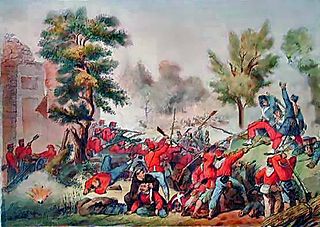
The Battle of the Volturno refers to a series of military clashes between Giuseppe Garibaldi's volunteers and the troops of the Kingdom of Two Sicilies occurring around the River Volturno, between the cities of Capua and Caserta in northern Campania, in September and October 1860. The main battle took place on 1 October 1860 between 30,000 Garibaldines and 25,000 Bourbon troops (Neapolitans).
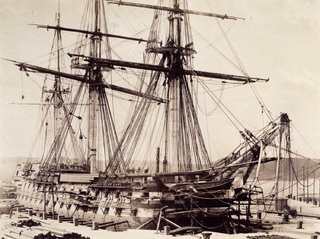
HMS Hannibal was originally planned as a 90-gun second rate ship of the line, to be built at Woolwich Dockyard. She was ordered on 14 May 1840, but cancelled and re-ordered. This ship was also named HMS Hannibal, and used the new screw propulsion technology. She was a 91-gun second rate, built at Deptford Dockyard by Charles Willcox, Master Shipwright, and launched on 31 January 1854. She served in the Crimean War, commanded by John Charles Dalrymple Hay.
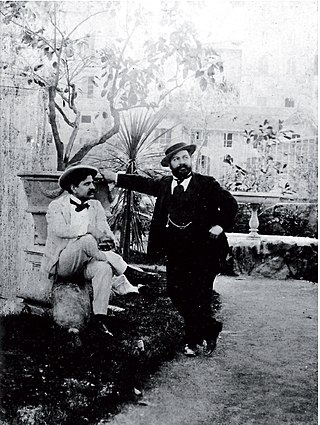
Mario Rutelli was an Italian sculptor.
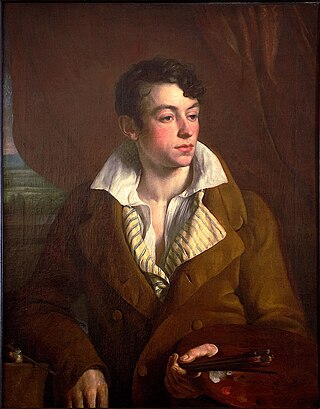
Antonie or Anton Sminck Pitloo was a Dutch painter. His surname was originally Pitlo, but he added the extra "o" because he was often mistaken for an Italian while resident in Italy. In Italian he is also known as Antonio van Pitloo.

The Old English Cemetery is a cemetery in Livorno (Leghorn), central Italy, located on a plot of land near the Via Verdi, close to the Waldensian Church and to the formerly Anglican church of St. George. It is the oldest Protestant cemetery in Italy.
Reverend Thomas Hall was born April 8, 1750, in the Township of Byberry, Pennsylvania, and was the second eldest son of Captain John Hall (1722–1798) and Sarah (Parry) Hall. He was a cousin of Dr. Benjamin Rush through his aunt, Susannah Hall, and a nephew of the Reverend Samuel Finley (1715–1766) through his aunt Sarah Hall (1728–1760).

The Monumental Cemetery of Bonaria is located in Cagliari, Sardinia. In use between 1829 and 1968, this monumental cemetery originally occupied an area at the base of the hill of Bonaria, and over time expanded upwards. The main entrance is located in Piazza Cimitero, with a second entrance in Ravenna, at the Basilica of Bonaria. Several famous people were buried in Bonaria, including the canonical archaeologist Giovanni Spano, the tenor Piero Schiavazzi and General Carlo Sanna.

TheCimitero Evangelicoagli Allori is located in Florence, Italy, between 'Due Strade' and Galluzzo.

Giovan Battista Filippo Basile was an Italian architect.

The Southern Army was the force of around 50,000 Italian and foreign volunteers which formed as a result of the Expedition of the Thousand. The name was coined by Giuseppe Garibaldi.
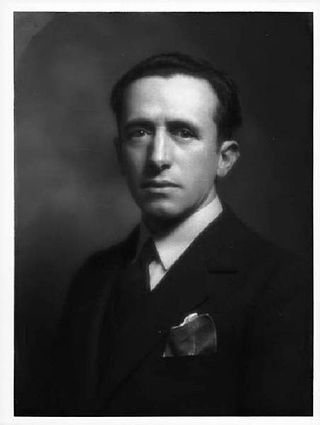
Giovanni Greppi was an Italian architect best known for having designed some of the most famous military shrines in Italy.
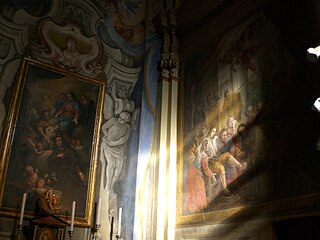
Although it has been characterized in recent centuries as an essentially industrial city, Busto Arsizio counts among its most valuable buildings the numerous monuments of an ecclesiastical nature, testifying to the deep religiosity of its people. Of particular note are the Sanctuary of Santa Maria di Piazza, the Basilica of St. John the Baptist, and the Church of San Michele Arcangelo.





















